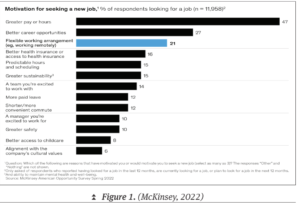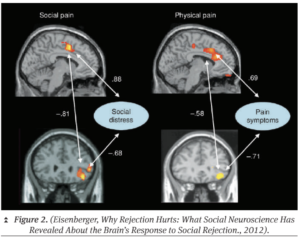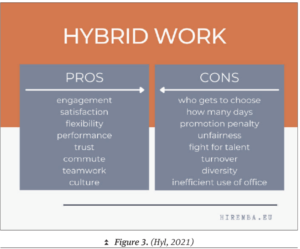Research Objectives
This study aims to evaluate emerging qualitative research on the influence of implementing Neuroleadership qualities post pandemic within an organization. There is an objective to weigh how employees in diverse physical locations are socially engaged, feeling connected and fulfilled with Neuroleadership engagement.
Keywords:
Organization, Social Engagement, Qualitative research, NeuroLeadership.
Bio
Martha Davidson is the founder of Mpowering Minds Now where her mission is to empower corporate leaders use Neuroscience leadership practices and inspire midlevel managers specifically in the STEM profession to accelerate their desire to own a seat in the executive suite utilizing neuroscientific leadership strategies. Currently less 5 % of African American Women in STEM rise to senior leadership and less than 25% of women in technology over-all are in leadership positions. She is Certified in Neuroscience Coaching and Leadership specializing in Unconscious Bias, Corporate Leadership Consultancy and Speaker focusing on Advocacy for women in Technology. She is an International Speaker and Author that is passionate in empowering others to amplify their purpose and superpowers with the brain in mind. She has over twenty five years in Cybersecurity as a global leader and influencer for Fortune 100 companies in United States, the Royal Bank of Scotland and BCD Travel. Her mission is to empower 100,000 women to Empower Women in technology professions to thrive by 2024. She is a Google Women Techmaker Global Ambassador and DEI advocate Trust Women In Tech.
Abstract
The COVID-19 pandemic has significantly transformed the dynamics of social engagement in work environments. In addition, it has heightened the importance and awareness of the implementation of Neuroleadership practices. Neuroleadership integrates the connection between the brain and effective leadership. It is an emerging leadership concept that promotes, emotional and social intelligence, empathy, compassion, decision making, cultural intelligence and inclusiveness towards building a cohesive, collaborative environment irrespective of physical work environments. There is an emerging body of qualitative research that examines the intersection of neuroscience, social intelligence, and social engagement both pre- and post-COVID-19. This study aims to evaluate emerging qualitative research on the influence of implementing Neuroleadership qualities post pandemic within an organization. There is an objective to weigh how employees in diverse physical locations are socially engaged, feeling connected and fulfilled with Neuroleadership engagement. Additionally, this study examines how to implement leadership strategies post-pandemic embodying the mission and culture of an organization’s ability to implement sustainable social engagement policies. This study has been carried out via a review of published literature providing key insights for Organizations to implement a leadership strategy that ensures success and employee wellbeing. Results have discussed the following: Neuroleadership qualities post pandemic, Neuroleadership and employee engagement, strategies post-pandemic. It is evident through this study that within Organizations workers are continuously embracing the flexibility of remote working. Organizations should develop the appropriate accountability, training, and attach significance to developing leadership practices.
Introduction
The COVID-19 pandemic has significantly transformed the dynamics of social engagement in work environments (Somani, IMPROVING BUSINESS ETHICS IN THE NEW NORMAL, 2022). In addition, it has heightened the importance and awareness of the implementation of Neuroleadership practices (Sip, 2020) . Neuroleadership integrates the connection between the brain and effective leadership. It is an emerging leadership concept that promotes, emotional and social intelligence, empathy, compassion, decision making, cultural intelligence and inclusiveness building a cohesive, collaborative environment irrespective of physical work environments including within an office setting, a hybrid or remote working environment (Aboiron, 2022). There is an emerging body of qualitative research that examines the intersection of neuroscience, social intelligence, and social engagement both pre- and post-COVID-19.
Prior to the COVID-19 pandemic, Organizational leadership and management practices primarily focused on managing teams within the office setting. Physical face-to-face meetings were conducted through which leaders could readily engage with their employees. Therefore, it could be perceived that there was little accountability for managers to embrace the concepts of Neuro-leadership. In contrast, the COVID-19 pandemic relied on technology to ensure Organizations were able to continue operation and generate revenue (Somani, Progressing Organisational Behaviour towards a New Normal. , 2021). This was due to the imposed governing body regulations applied nationally and internationally, ensuring social isolation was adhered to in attempt to reduce the transmission of COVID-19. As restrictions were gradually lifted, for many employees of Organizations the work from home culture remained. Simultaneously, Organizations opened their doors to employees encouraging physical interaction creating hybrid work environments. This situation has made it essential for managers within Organizations to embody Neuroleadership insights and perspectives.
Daniel Goleman has written extensively on the importance of emotional intelligence and social intelligence. He reveals that emotional intelligence focuses on personal emotions (Drigas & Papoutsi, 2018). Social engagement, awareness and social intelligence is interpersonal perspective of engaging with compassion, empathy, active listening, creating a sense of belonging and trust (Goleman & Boyatzis, 2008). A combination of both managerial /leadership theories are believed to be critical factors towards creating a collaborative culture in the workplace prepandemic. Face-to-face interaction, both verbal and non-verbal body language could be communicated by managers and employees. Research has revealed that post-pandemic expectations pertaining to working within an office setting have altered considerably. Pre-pandemic, 99% of employers cultivated the expectation that their employees would work physically within the office environment in excess of 80% of their time. In contrast, postpandemic this view is only shared by 10% (Scharf & Weerda, 2022). However, post pandemic within the hybrid environment establishing the know, like feel and body language is absent. This can be due to the potential absence of leadership and management practices which are believed to establish the importance of social engagement, that embraced the concepts of Neuroleadership in the work environment. The neuroscience of empathy, compassion and selfcompassion addresses this notion (Stevens & Woodruff, 2018) which also enhances the need to engage further post-pandemic.
Objectives
This study aims to evaluate emerging qualitative research on the influence of implementing Neuroleadership qualities post pandemic within an Organization. There is an objective to weigh how employees in diverse physical locations are socially engaged feeling connected and fulfilled with Neuroleadership engagement. Additionally, this study examines how to implement leadership strategies post-pandemic embodying the mission and culture of an Organization’s ability to implement sustainable social engagement policies. This study has been carried out via a review of published literature and the researcher’s experiences.
Results and Discussion
Results have identified the following qualitative research studies: The Neuroscience of Empathy and Compassion in the Workplace by Mary Frances Winters; Social Intelligence and Emotional Intelligence in the Workplace by Goleman, Boyatzis, and McKee; Social Engagement and Its Role in Workplace Culture by Rani Dhawan.
Neuroleadership qualities post pandemic
The COVID-19 pandemic accelerated the rate of change within societies, including the rate of technological advancements. Working from home remotely, became habitual therefore, there is a divide in perspectives post-pandemic pertaining to hybrid workplaces vs making workers come back into the office. Figure 1 illustrates results of a study that was conducted on individuals seeking employment positions post-pandemic. They were asked what their motivation was when seeking a new job. A flexible working arrangement was the third popular motivation to employment superseded by better career opportunities at second place, and greater pay of hours at the top.

It is evident that post-pandemic, managing hybrid workers has become a very important element of the work culture. The technological evolution has facilitated research within neuroscience and understanding the brain better, in addition to the way digital technology is applied within the business context creating an impact on consumers and workers (Cuesta-Valiño, GutiérrezRodríguez, & García-Henche, 2022). Many individuals have experienced emotional turbulence during the COVID-19 pandemic, therefore emotional management, and attention to cognitive processes within Organizations has become more important than within the past, particularly within decision making processes from leadership roles. Neuroleadership facilitates the identification of skills that cannot be seen but are necessary to be a successful leader (Goldsmith, 2010). Research has suggested that the impact of social pain can be also interpreted as physical pain because they are reliant on a shared neural circuitry (Eisenberger, Broken hearts and broken bones: A neural perspective on the similarities between social and physical pain, 2012). The same neurological basis is shared, contributing to the experience of physical and social pain. The emotional elements of the brain coding for physical pain can be activated through negative experiences due to social pain (Onoda, Okamoto, & Nakashima, 2009).

Figure 2 illustrates the brain experiencing social pain and physical pain. The left side illustrates neural activity when an individual is facing social exclusion relating to social pain which correlated with social distress. In contrast, the right-side illustrates neural activity during painful visceral stimulation through which pain symptoms are experienced, both are self-reported. There is a mutual perception of pain between physical pain and social pain reflected through performance in behaviour and regions in the brain. Research pertaining to social and cognitive neuroscience has revealed that the experience of pain individuals experience can be reduced through social support and heightened social connections. Neuroscience has shown that the brain processes social pain in a manner similar to physical pain. Rejection, social exclusion, or disrespectful treatment in the workplace can activate regions associated with distress and discomfort, leading to negative emotional and physical responses.
Neuroleadership and employee engagement
Post-pandemic Organizations have implemented numerous strategies to ensure conducive working relationships with their employees and cultivated a revised working environment. It is important for Organizations to understand that this is an opportunity to strengthen practices within the Organization and create a new normal world. The employee autonomy will be altered through the hybrid working initiative and the way management approach situations.

Research has highlighted positive and negative elements of hybrid working as illustrated in figure 3.
There is a direct impact upon the way Organizations are managed and the success of that Organization in the future. Thus, autonomy is necessary, and mangers need to ensure fairness within Organizations. It is evident, that autonomy and flexibility are necessary for a hybrid working model. Employees have endured periods of shock and pain through the COVID-19 pandemic, which has been transforming into reconnection and rehabilitation as adaptation processes are underway towards helping individuals to become social beings again. According to the Neuroleadership Institute’s SCARF model, autonomy comprises of five social components that can alter, to ensure the satisfaction and engagement of employees. Some individuals are sensitive to threat of their status and rewards, in contrast other people are more sensitive to certainty and relatedness (Institute, 2022).
- Status
- Certainty
- Autonomy
- Relatedness
- Fairness
Through this model, leaders can aim to deviate their employees away from feelings of threat which reduces performance levels. In contrast employees cultivating a mindset from a reward state enables them to think clearly, contributing towards effective performance. Leaders should realize that employees value freedom and choice, contributing towards feelings of threats and rewards despite the location within which employees are working from. Through the practice of autonomy in Neuro-leadership, employees feel more socially connected and engaged. It has been proven to reduce stress factors and improve performance. Employees are perceived to be in control and experience a reduction in strong emotions associated with the choices that have been made. Individuals must be aligned with their actions, opposed to being forced into adhering to decisions with dire consequences. Thus, Neuroleadership provides a balance between ensuring high productivity rates for employees and reduced stress factors including commuting to a place of work. When Organizations implement greater autonomy, employees are more engaged which directly impacts upon their positive mental wellbeing. Despite the positive factors pertaining to autonomy, it may not be suitable for each individual employee, there may also be segregation between employees working within remote settings and those who work within the Organization physically (Lauer, 2021). There is immense impact on employees via the way leaders within Organizations lead, feel and in addition to burdens of associated financial implications. Emotional intelligence can be perceived as a reflection of personal emotions and regulating as leaders can create a deeper understanding on the use of the SCARF model. It can be utilised to ensure cultural fairness, strengthen social and cultural intelligence, interpersonal skills and overcome cultural differences.
Strategies post-pandemic
Organizations are required to implement robust leadership strategies post-pandemic to ensure positive change and increased productivity. It is necessary to identify working arrangements of employees as some may be remote workers, while others are hybrid workers or based in the office setting full time. For each, it is important to include the appropriate functionality while being placed in appropriate teams. They are recommended to all abide by the same principles including available working hours and location. Experiencing social pain in the workplace can have detrimental effects on an individual’s emotional well-being. This is particularly due to trauma associated with events occurring within the COVID-19 pandemic. Thus, symptoms can be exacerbated in the new normal world resulting in increased levels of stress, anxiety, and depression, leading to decreased job satisfaction and overall productivity. Hence, leaders implementing Neuroleadership should ensure that they promote positive mental health and provide the necessary support after identifying individuals that are struggling.
Social pain can impair cognitive functions such as attention, memory, and decision-making. The distress caused by negative social experiences can consume mental resources, impacting an individual’s ability to focus and perform tasks effectively. Hence leaders must aim to reward their employees appropriately to reward employees for their hard work. When workers experience social pain, their motivation and engagement at work can suffer. They may become disengaged, withdrawn, or exhibit decreased commitment to their tasks and the Organization. Hence, Neuroleadership should employ strategies to keep their employees motivated and engaged. Unfortunately, prolonged exposure to social pain in the workplace can create a toxic Organizational climate, characterized by low morale, higher turnover rates, and reduced collaboration among team members. Consequently, this contributes to low productivity and a hostile working environment. Understanding the neuroscience behind social pain highlights the importance of fostering positive social interactions, promoting respect, and creating an inclusive work environment. Organizations that prioritise psychological safety and address social pain can contribute to employees’ overall well-being, job satisfaction, and performance. Social Pain can also occur as a result of Organizations failing to address or understand the impact of what employees are facing. Even upon sharing concerns with Human Resources, which is the best line of action, individuals have been ignored. Hence, individuals have undergone personal journeys of healing. In addition, they have become Neuroleadership advocates for Organizations to take proactive measures to address managerial accountability and leadership appraisal impact.
Conclusion
It is evident through this study that within Organizations workers are continuously embracing the flexibility of remote working. Organizations should develop the appropriate accountability, training, and attach significance to developing leadership practices. They should highly engage remote workers with Neuroleadership practices of autonomy, trust, and active social engagement, to foster a sense of belonging and contribute to the Organization with a high trust factor of management.
A synergy of studies has highlighted both positive and negative implications of working within a hybrid workplace, as approximately 75% of the workforce has cultivated a hybrid working environment. Therefore, organizations are required to be proactive in their approach to address the challenges relating to social pain, isolation, collaboration and working within teams to harbour a culture of equality and inclusiveness. Leaders can implement the SCARF model to ensure a holistic approach within the hybrid working model, however this needs to be managed appropriately. Thus, organizations should ensure that managers are provided with rigorous training and continued education towards skill development, while taking accountability to enhance the SCARF model. This strategy is pivotal to ensure there is minimal attrition and for organizations to sustain employee retention rates. In addition, it creates a happier working environment for employees and managers as the organization should aim to provide enhanced diversity, equality, inclusiveness, relatability, fairness, and overall equality.
Organizations should realize the importance of implementing training focusing on equipping managers to personify interpersonal proficiencies. Simultaneously, they should be taught how to manage hybrid teams. This research has reflected that workers are embracing the flexibility of hybrid workers. In addition, neuroscience studies have demonstrated the managerial impact of positive social engagement to minimize isolation, rejection, inclusion, and feelings of value. Another imperative factor is that managers who lack the understanding of empathetic communication and interpersonal skills result in facilitating the creating of social pain. Consequently, this impacts upon heightening stress levels, feelings of being overwhelmed, burnout and it affects the overall well-being of the employee, thereby impinging upon attrition and retention. Thus, it is recommended that social engagement within a hybrid workplace should demonstrate negative and positive effects on workers, managing attrition, and retention. Furthermore, Organizations can create accountability models to address social pain, gender bias, cultural bias, empathy and compassion to foster collaboration, teamwork and sense of belonging.
Further research pertaining to commonalities between physical pain and social pain is required because physical pain can be perceived as a psychological phenomenon. It is governed through expectation and attention. In contrast, social pain is perceived as a biological phenomenon which can be associated with survival in social life. However, as human beings adapt to situations and their environments, there are commonalities, and an inseparable relationship arising between the two types of pain. It is necessary to redefine management styles within Organizations in the new normal world to include inclusivity, establish the trust factor, cultivate a sense of belonging, and culture of collaboration.
References
Aboiron, J. (2022). Leadership Seen by Neuroscience. International Journal of Applied Research in Business and Management, 8-18.
Cuesta-Valiño, P., GutiérrezRodríguez, P., & García-Henche, B. (2022). Word of mouth and digitalization in small retailers: tradition, authenticity, and change. Technol Forecast Soc Change.
Drigas, A. S., & Papoutsi, C. (2018). A New Layered Model on Emotional Intelligence. Behavioral sciences , 45.
Eisenberger, N. I. (2012). Broken hearts and broken bones: A neural perspective on the similarities between social and physical pain. Curr Dir Psychol Sci, 42–47.
Eisenberger, N. I. (2012). Why Rejection Hurts: What Social Neuroscience Has Revealed About the Brain’s Response to Social Rejection. In J. Decety, & J. T. Cacioppo, The Oxford Handbook of Social Neuroscience Get access Arrow (pp. 587–598). Oxford: Oxford University Press.
Goldsmith, M. (2010). Sharing leadership to maximize talent. Harvard Business Review .
Goleman, D., & Boyatzis, R. R. (2008). Social Intelligence and the Biology of Leadership. US: Harvard Business Review.
Hyl, Z. (2021, 10 01). How Should Leaders Approach Hybrid Work Model to Retain Talent. Retrieved from linkedin: https://www.linkedin.com/ pulse/how-should-leaders-approachhybrid-work-model-retain-talenthyl/?trk=articles_directory
Institute, N. (2022). The SCARF Assessment. Neuroleadership Institute.
Lauer, J. (2021, 06 01). Successful Hybrid Workplace. Retrieved from linkedin: https://www.linkedin.com/ pulse/neuroleadership-successfulhybrid-workplace-jackie-lauer/
Lieberman, M. D., & Eisenberger, N. I. (2009). Neuroscience: Pains and pleasures of social life. Science, 890–891.
Lieberman, M. D., & Eisenberger, N. I. (2015). The dorsal anterior cingulate cortex is selective for pain: Results from large-scale reverse inference. Proc Natl Acad Sci USA, 15250–15255.
McKinsey. (2022, 06 23). Americans are embracing flexible work—and they want more of it. Retrieved from Mckinsey: https://www.mckinsey.com/ industries/real-estate/our-insights/ americans-are-embracing-flexiblework-and-they-want-more-of-it
Onoda, K., Okamoto, Y., & Nakashima, K. (2009). Decreased ventral anterior cingulate cortex activity is associated with reduced social pain during emotional support. Soc Neurosci, 443–454.
Scharf, S., & Weerda, K. (2022). How to lead in a hybrid environment. mckinsey.
Sip, K. (2020, 11 30). Brainbased leadership in a time of heightened uncertainty. Retrieved from Chief learning officer: https://www.chieflearningofficer. com/2020/11/30/brain-basedleadership-in-a-time-of-heighteneduncertainty/
Somani, P. (2021). Progressing Organisational Behaviour towards a New Normal. . Journal of Economics, Finance and Management Studies, 1628-1633.
Somani, P. (2022). IMPROVING BUSINESS ETHICS IN THE NEW NORMAL. International Journal of Social Sciences and Management Review, 182-194.
Stevens, L., & Woodruff, C. (2018). The Neuroscience of Empathy, Compassion, and Self-Compassion. USA: Imprint: Academic Press.



